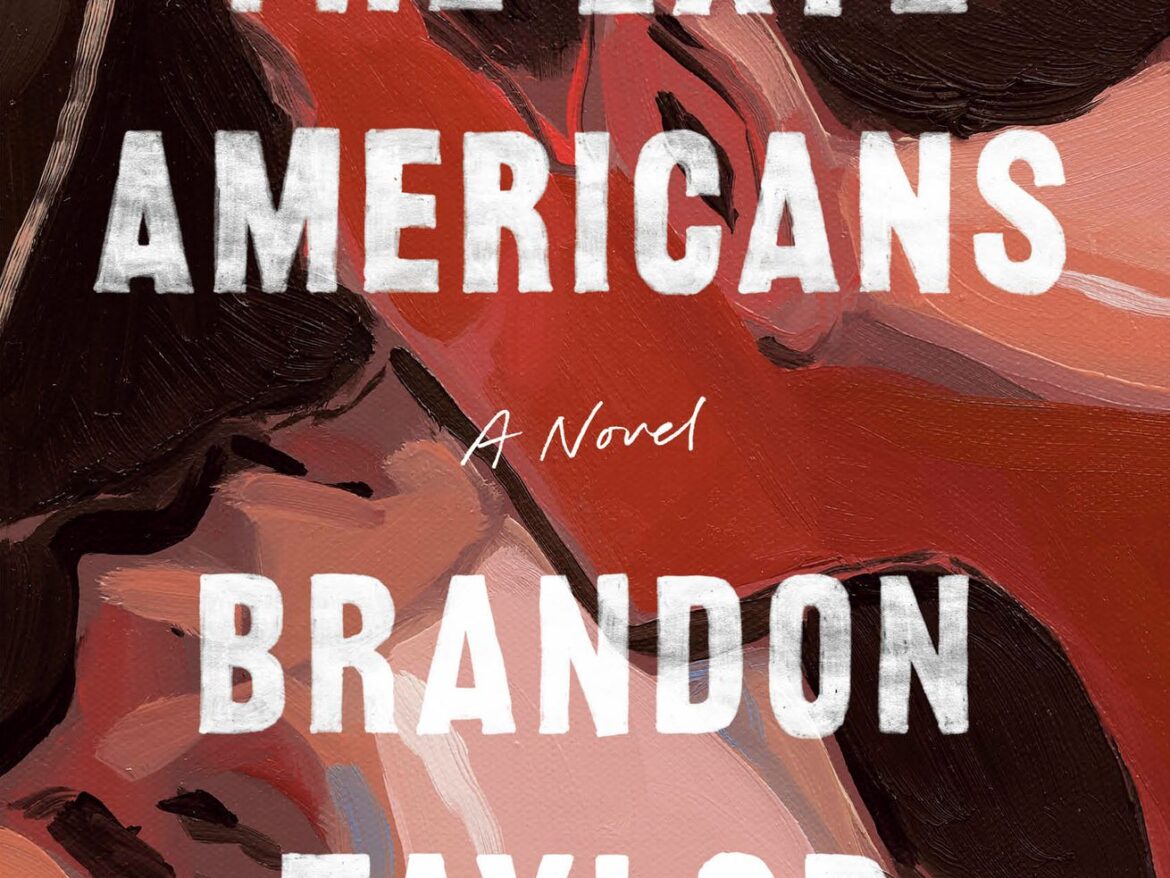The author’s second novel zooms in on what an artist should be.
Early on in Brandon Taylor’s elegant and restrained new novel The Late Americans, a poet named Seamus imagines the world to be a kind of diorama or dollhouse with “some enormous and indifferent God” peering down at him. Everyone else he knows is in the dollhouse too, moving about their lives under God’s judging stare, “like little automatons in an exhibit called The Late Americans.”
Part of the project of this novel is to turn the readers into God, showing us the automated movements of Taylor’s late American characters as they glide precisely along their clockwork tracks, worrying about money and having sex and making art. In creating that kaleidoscopic, panoramic view, it succeeds — but it sometimes falters on the details.
Like Taylor’s two previous books, The Late Americans involves the intertwined lives of young people, mostly queer men, on a Midwestern college campus. In this case it’s the University of Iowa, where Taylor got his MFA. (“What I love about campus fiction,” Taylor remarked in a recent essay, “is that it provides a world in miniature whose rules and laws and rigors can be stand-ins for the rules, laws, and rigors of the broader world.”) Seamus is in the poetry program, seething with fury at his classmates’ shallow political writing. We also meet students in the dance program, an ex-dancer turned finance student, townies, a lone visual artist.
The book is built daisy chain-style. Each chapter is told from the point of view of a different character, generally one who featured as a minor character before. Many of the chapters can stand on their own as completed stories, and the strongest link between them comes from ominous, threatening Bert, a local closeted gay man who occasionally sleeps with and occasionally attacks the out students of the university. He lurks in the background of the action like a Chekhovian gun that will never properly go off.
Meanwhile, Taylor’s point-of-view characters tend to be united by their anger toward social pieties they consider aesthetically unpleasing or illogical. Seamus is furious that his classmates dismiss his poetry about God and flesh and the mysteries of the cosmos as insufficiently anti-colonialist. Fyodor, a local who works at a beef-processing plant, resents his vegetarian boyfriend Timo for hating Fyodor’s job even though Timo is pro-death penalty. “That’s cruelty. Isn’t it?” Fyodor asks.
These characters are angry in part because they are trying to find beauty in the world and in their work, and everything that thwarts them is an enemy: other people, the limits of their artistic abilities, lack of money, their own bodies. Their connections to each other are vexed and imperfect, made fraught by barriers of identity. Fyodor and Timo are both mixed race, which is “thrilling” to Fyodor, but on the other hand Timo’s family has money, which makes him “very naive.” Ex-dancer Ivan is mixed race and poor, while his boyfriend Goran is Black and adopted by a wealthy white family, which makes Ivan tend to forget Goran is Black.
This polyphonic narration makes The Late Americans feel closer to Filthy Animals, Taylor’s 2021 short story collection, than to Real Life, his 2020 novel. Real Life was exceptional for its close, almost claustrophobic investigation of the psyche of its lonely, tormented protagonist. The Late Americans, by design, has nothing so immersive to offer readers. Instead, as we delve into the mind of each character in turn, it starts to become disconcertingly difficult to tell one from the other.
These characters all talk in the same ways. They have different thoughts, but they express their thoughts in the same kind of language, using the same kind of framework. They blur together.
Taylor is at his strongest with his most isolated characters. Bea, the only character not to appear by name in any other chapter, is an artist who talks to almost no one but the children she tutors at her day job. (“If you killed yourself, would anyone feel sad?” one of them asks her.) Her particular sorrow is distinct, and so is the tiny redemption she finds from human connection, from her art, from the natural world.
Otherwise, The Late Americans is a novel whose ideas and images linger longer in the mind than its characters do. Days after reading it, I think frequently of Seamus’s fantasy of God “prying the house open,” with his “Gorgon’s head peering down in judgment.” The precision of the word prying, with its connotations of intrusion and physical force; the cosmic wonder of the idea of God looking down with a Gorgon’s head — how thrilling. How fascinating. What craftsmanship.
Already, though, it’s become hard for me to remember which character had that fantasy, or which of Taylor’s books I read it in. I closed this book craving something distinct that I never found.
